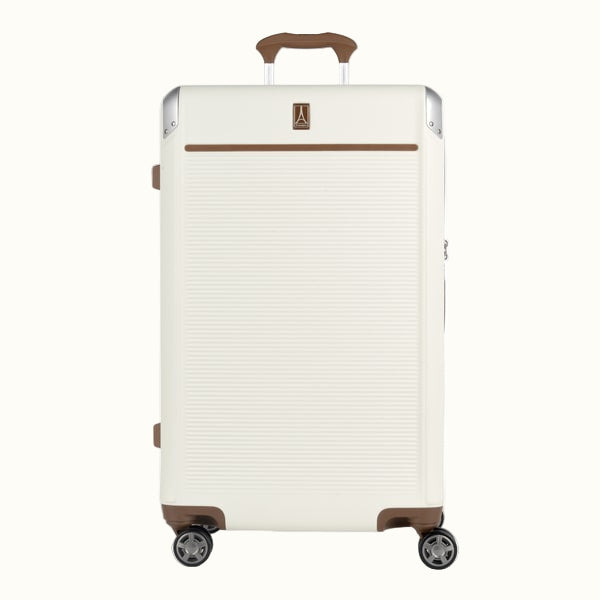Traveling to Greece offers something for everyone: Sun-drenched islands with turquoise Mediterranean waters, ancient ruins, picturesque towns, lively cultural festivals, and mouthwatering cuisine. This Greece travel guide helps you make the most of your trip to Greece, whether you want to experience the country’s archaeological wonders, seaside serenity, or romantic vistas.
Traveling to Greece and Between Destinations
Traveling to Greece is easy. If you’re flying in, you have your choice of 15 international airports. Eleftherios Venizelos, also known as the Athens International Airport (ATH), is the nation’s primary airport. If you prefer to start your trip in northern Greece, consider flying into Thessaloniki Airport (SKG), also known as Macedonia International Airport. The most popular islands also have international airports, including Rhodes Airport (RHO) in the Dodecanese Islands, as well as two airports on Crete: Chania International Airport (CHQ) and Heraklion International Airport (HER).
As for how to travel in Greece, you can rent a car, hop on short domestic flights, or use one of the country’s many island ferries. Buses and limited regional trains are available, or you can rent a scooter for day trips. It’s also possible to charter a yacht for island-hopping. If you choose to rent a car, remember that the roads and parking can be challenging for someone not familiar with local driving conditions.
Top Seven Things to Do in Athens
-
Tour the iconic Acropolis and Parthenon, which remains one of the can’t-miss places to go in Greece. TheAcropolis Museum, situated at the foot of the hill, houses artifacts related to the site and serves as a valuable source of information about the area.
-
The Temple of Hephaestus, located near the Acropolis, is one of the best-preserved temples in Athens.
-
TheNational Gardens of Athens, established by Queen Amalia, are an exceptional example of 19th-century landscape architecture located in the heart of Athens.
-
The Plaka, Athens’ oldest neighborhood, is renowned for its narrow, pedestrian-only streets, traditional taverns, charming shops, and historic sites.
-
Lycabettus Hill is the highest point in Athens and offers beautiful sunsets.
-
Try souvlaki, moussaka, and other traditional Greek dishes at local taverns.
-
Explore Anafiotika, a whitewashed village under the Acropolis.
Top Seven Things to Do in Santorini
-
Visit Oia Village, an iconic setting of whitewashed buildings, blue-domed churches, and unforgettable sunsets.
-
Hike the breathtaking Caldera Trail, which connects Oia and Fira.
-
Explore Akrotiri, the ruins of a Minoan Bronze Age settlement from 4,000 BCE.
-
Relax on the unique black volcanic sand of Perissa and Perivolos beaches.
-
Take a boat tour to the Nea Kameni volcano and swim in the therapeutic hot springs.
-
Sample Sanorini’s unique wines produced from grapes grown on volcanic soil.
-
Explore the hilltop village of Pyrgos, with its historic castle and glimpses into authentic island life.
What to Pack for a Greece Trip
Greece experiences hot, dry summers and mild, wet winters, so plan your visit accordingly. Light, breathable clothing, a light jacket, and comfortable shoes will help keep you cool during summer excursions. Don't forget to pack your sunglasses, a wide-brimmed hat, swimsuits, and sandals for the beach.
If you're planning a winter trip, pack some sweaters, long-sleeved shirts, a heavier jacket, gloves, and warm socks. Waterproof jackets and umbrellas are also recommended. In addition, you might want to consider packing the following, depending on when you’re traveling to Greece:
-
High SPF sunscreen
-
Rash guards or sun-protective clothing
-
Insect repellant
-
Universal travel adapter (Greece uses European-style outlets)
-
Portable charger
-
Reusable water bottle
-
Waterproof phone pouch
Tips for First-Timers in Greece
-
Pace yourself. There are many places to go in Greece, and you won’t see everything in one trip. Slow down and enjoy the culture, rather than rushing from one island to another.
-
Learn some basic Greek phrases. Locals will appreciate the effort. For more complex conversations, consider installing a translation app on your phone.
-
Eat at local taverns and restaurants. You'll get a more authentic experience than eating at tourist traps.
-
Visit ruins in the late afternoon to avoid the midday heat.
-
Cash is more widely used than debit and credit cards. Use official bank ATMs and avoid Euronet machines, which charge high fees.
-
Water is safe to drink on the mainland. Consider using bottled water on islands.
We hope this Greek travel guide helps you plan your next adventure. Traveling to Greece is amazing by itself, or you can start in Greece and explore other European countries. To get you started, check out our Paris Travel Guide.







